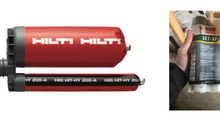Flashing the Ledger Board
Deck Ledger Flashing
Author: Pacific Northwest Inspections Group, LLC Date: 25-Nov-2013. Category: Structural
Flashing the Ledger Board

The most critical concern while installing the ledger board should be how to prevent water from entering the seams into the building. Installing flashing known as a drip edge to act as a barrier to keep water out should be on every deck structure. If water can penetrate into the buildings framing it can result in structural issues, severe mold, decay, and overall serious and expensive damage. After you have cut the siding but before you install the ledger board you must apply your flashing.
To install flashing you will need to tuck 2-3” under the buildings cladding before bending the material over the top of the decks ledger board. You may also have to remove nails in the siding to allow the flashing to fit into place. Make sure the flashing runs the entire length of the ledger board and the flashing should have a slight pitch away from the buildings wall. >Once the flashing is in place behind the siding you can install the ledger board underneath.
Afterwards you can use a wood block and a hammer to bend the flashing over the ledger board to form the drip edge. Use silicone caulking to seal the end butt joints and any places where water might intrude. Make sure that you overlap and seal any seams with 6-10” of overlap and that you never allow the flashing to become punctured by nail and screw holes. In areas where there will be significant amounts of rain and snow you may want to line the buildings wall with a self sealing house wrap like Frog Paper before installing the flashing. Some contractors also install a layer of flashing to the bottom of the ledger board.
This is not required but offers an additional barrier for water that could flow into the house underneath the ledger board; we recommend it! Water WILL can get into anyplace that is not appropriately sealed.
Deck ledger flashing




















